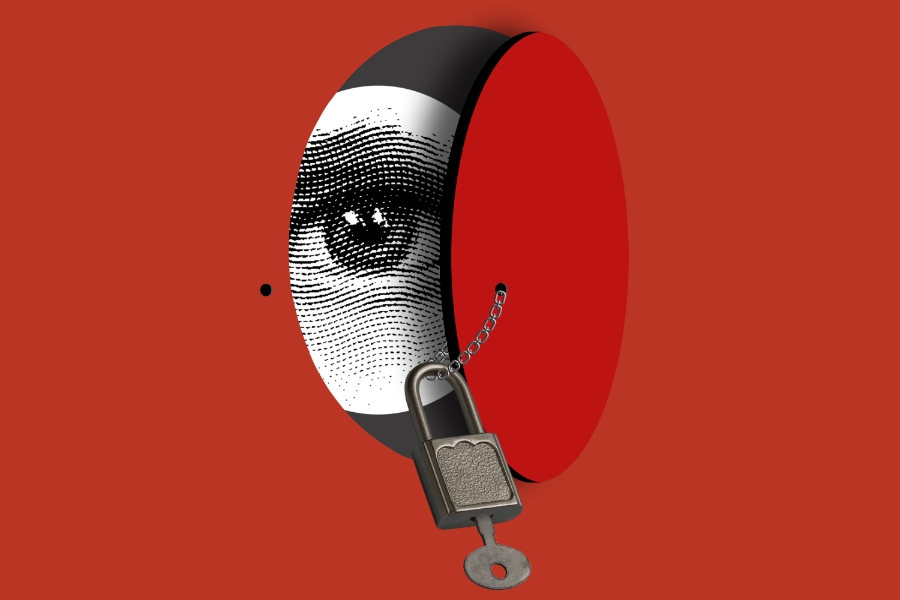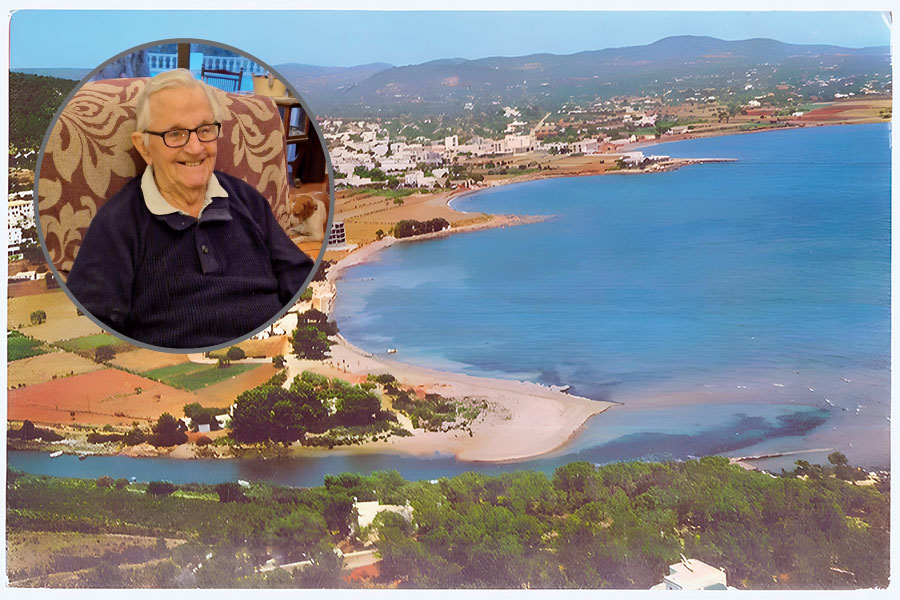Legal & Real Estate
Home, Garden & Decoration
Global Topics
Inside Ibiza
Health & Wellness
Ibiza Optimista
LEGAL & REAL ESTATE

“Legalisation Amnesty” for rural properties?
The Decree Law approved in May 2024 by the Balearic Government allows the legalisation of illegal buildings on rural land under certain conditions, but is not a total amnes... READ MORE

Selling an inherited property in Ibiza
Anyone who inherits a property in Ibiza and plans to sell it directly to a third party must first settle the estate. To do this the inheritance must be accepted in Spain, a... READ MORE

The Spanish Money Laundering Law
Some laws seem so far removed from the lives of normal citizens that people believe they can safely ignore them. The "Law on the Prevention of Money Laundering and the Fina... READ MORE

Villa Contact: An Ibiza tradition reaching new heights
Villa Contact is one of the most highly respected real estate agencies in Ibiza, with dynamic young owners and impressive international connections. It is a family business... READ MORE

Is a seasonal rental contract OK for holiday rentals?
Ibiza generally prohibits tourist rentals, but some landlords attempt to bypass this by formalizing seasonal leases exceeding a month. However, distinctions exist between s... READ MORE

Understanding the New Balearic Inheritance Tax Laws
"🔍✨ Tax Changes in the Balearic Islands: The new Balearic government has approved tax benefits in the Inheritance Tax. How does this affect residents and non-residents? We ... READ MORE

MODELO 210 - Tax for Non-Resident Homeowners
Non-resident property owners in Ibiza must pay Income Tax and file an annual declaration using model 210. The tax is calculated on the cadastral value, with the base for th... READ MORE
HOME, GARDEN & DECORATION

The Seven Basics of Interior Design
Designing interiors is the art of creating an environment that reflects the personalities and tastes of its occupants, in a way that is both tasteful and functional. Making... READ MORE

Enlivening Your Home with Cushions
Interior designer Susanne Schmidt emphasizes the significance of cushions and blankets in any decor scheme. Pillows, being incredibly versatile, come in various fabrics, sh... READ MORE

Awnings for Outdoor Comfort
Experience the joy of outdoor living in Ibiza with a well-designed awning. Beyond providing shade and protection, awnings are decorative elements that add style to your hom... READ MORE

Painting Your Home
Choosing the right paint for your home can be overwhelming. Oil paints offer durability and a smooth finish, while water-based paints dry faster and are easy to clean. Matt... READ MORE
GLOBAL TOPICS

Electric Cars - Why The Rush?
Last year the European Parliament approved a law to ban the sale of any new car with a combustion engine by 2035. This includes petrol, diesel and hybrid vehicles, so in ju... READ MORE

IMAGINE: Envisioning a More Beautiful World
John Lennon wrote the classic song “Imagine” in 1971, and its final verse had an inspirational message: “You may say I’m a dreamer, but I’m not the only one. I hope someday... READ MORE

In Search of the Truth
Democracy depends on freedom of the press and expression, but traditional media has lost credibility. Social media is increasingly being used as a source of information, bu... READ MORE

Universal Basic Income
Universal Basic Income (UBI), providing a guaranteed minimum salary for every citizen throughout their adult life, sparks debates among economists. Advocates emphasize its ... READ MORE

Reflections on Covid-19
The Covid-19 pandemic unfolded gradually, with initial perceptions of minimal threat evolving into a global crisis. Questions surround the virus's origin, with speculation ... READ MORE

Forbidden History
Did human civilization truly begin 5,200 years ago as taught, or is there a more mysterious history waiting to be uncovered? Conventional archaeologists point to the Fertil... READ MORE
INSIDE IBIZA

Ursula Witthöft: A Shining Presence
Ursula is a passionate and charismatic coach, dedicated to helping people overcome fears and challenges to achieve happiness and fulfilment. With over 20 years of experienc... READ MORE

Es Vedrà: Island of Myth and Magic
The imposing rock of Es Vedrà, located in the southwest of Ibiza, is one of the island's most fascinating landscapes. Standing more than 400 metres high, its presence feels... READ MORE

BIBO PARK - Exploring the Wonders of Nature
A trip to BIBO Park is a wonderful adventure for people of all ages that blends the experience of Ibiza’s varied nature with fascinating scientific innovations and insights... READ MORE

A Life Well Lived: John Penny
John arrived in Ibiza in 1970, looking for a change after years in the British army. After falling in love with Milca, he began his business venture by opening clubs such a... READ MORE

The Pirate Towers of Ibiza
Discover Ibiza's Rich Pirate History! 🏴☠️ The island's coastline is dotted with ancient watchtowers, once the defense against North African pirates. These towers, strategi... READ MORE
.jpg?locale=en)
Sven Puch: An Ibiza Story
Many people have found their true selves here on Ibiza. For over 40 years it has been a place of freedom where you can leave behind who you were, and choose to be who you r... READ MORE
HEALTH & WELLNESS

The Pathways in Your Mind
True happiness is found by learning to step away from automatic reactions and make conscious choices that favour love and abundance. Although neural patterns inherited in c... READ MORE

Learning to Love Yourself
Learning how to love yourself is at the very heart of your ability to create and enjoy the wonderful life that you desire. The benefits of self love touch every part of you... READ MORE

The Fountain of Youth
The Fountain of Youth, a centuries-old myth, inspired explorers like Ponce de León. Today, science unveils secrets to rejuvenation: a study shows lifestyle changes reduce '... READ MORE

The Magic of Mindfulness
Discover the power of Mindfulness 🧘♂️ This practice allows you to live in the present, making conscious decisions and overcoming automatic patterns. Meditating regularly i... READ MORE
.jpg?locale=en)
Aging Gracefully
For many, "aging" is synonymous with pain, discomfort, poor memory, loneliness, and ultimately death. However, research suggests that one's attitude towards aging can signi... READ MORE

Your “Hero’s Journey”
In the quest for a deeper meaning in life, we've lost sight of our true essence. Myths and archetypes, such as the 'Hero's Journey,' offer an ancestral guide to personal tr... READ MORE

Psychedelics for Therapy
Psychedelic drugs, demonized for decades, are gaining acceptance in conventional psychiatry. Psilocybin (from magic mushrooms) and MDMA (ecstasy/Molly) show promise in trea... READ MORE
IBIZA OPTIMISTA

Sustainable Desalination
More than 300 million people depend on desalination plants, which consume a lot of energy and often use fossil fuels. Oneka Technologies and Desolenator are looking for sus... READ MORE

Minor Marijuana Convictions Pardoned
Maryland's governor pardoned more than 175,000 people with minor marijuana convictions, seeking to correct injustices and promote racial justice as marijuana is now legal i... READ MORE

EU Industries to Pay for their Pollution
A new EU law will force the pharmaceutical and cosmetics industries to cover at least 80 per cent of the costs of cleaning up their pollutants in wastewater, following the ... READ MORE

Smart Helmet for Fire Fighters
A new smart helmet with thermal cameras and AI helps firefighters see and move better in fires by detecting their location, their equipment and potential victims in real time. READ MORE

Exploring the Far Side of the Moon
China was the first nation to land on the far side of the Moon in 2014. Their Chang'e-6 mission collected samples and they plan to establish a permanent system on future mi... READ MORE
© Copyright 2024
Ibicasa Home and Services.






